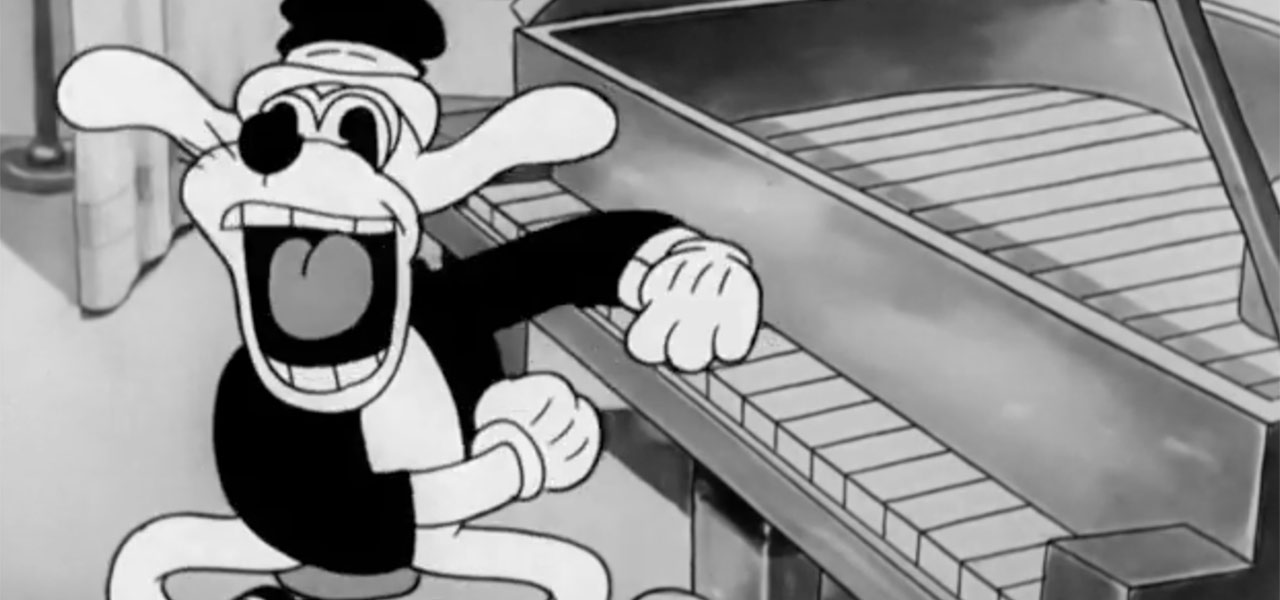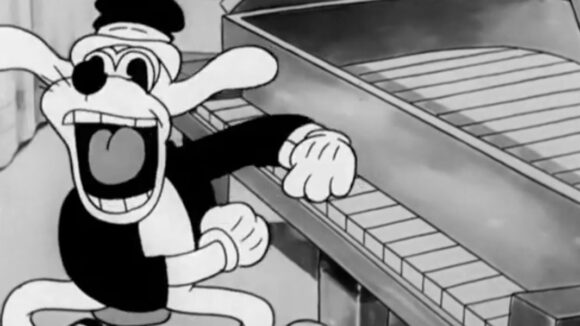

Obscure Cartoon Character Spotlight: Goopy Geer
You’ve heard of Bugs Bunny and Porky Pig, but have you heard of Goopy Geer? Perhaps not, but the cartoon dog headlined three Warner Bros. cartoons in the early 1930s and is the subject of today’s Obscure Cartoon Character Spotlight, a new series looking at characters who gave it their best shot but never achieved the heights of cartoon stardom.
Goopy was the third attempt to establish a recurring character for the Merrie Melodies cartoons, a series that was initially designed to showcase songs from WB’s music library. Goopy followed on the heels of blatant Mickey Mouse imitations Foxy (who also lasted three cartoons) and Piggy (who only lasted two). Unlike his short and squat predecessors, Goopy was designed as a tall, skinny dog with a large snout. Here’s his grand entrance in his debut short Goopy Geer (1932), directed by Rudolf Ising.
— Cartoon Study (@CartoonStudy) September 22, 2023
Now, I know what you’re thinking: Goopy is a rip-off of Goofy. Well, shockingly, he isn’t! Goofy’s debut cartoon Mickey’s Revue (1932) was released a month after the launch of Goopy, which is much too close for either film to have been influenced by the other. (Also, for the record, Goofy was referred to as Dippy Dawg in early appearances). The Goopy/Goofy connection is just a weird coincidence.
And even though Goopy Geer sounds like a ridiculous name that could only belong to a cartoon character, the moniker actually originated in the song the cartoon was supposed to be plugging: “Goopy Geer Plays Piano By Ear,” written by Herman Hupfeld (who also wrote the slightly more famous tune “As Times Goes By”). In the cartoon formed around the song, Goopy is characterized as a hammy vaudevillian who is devoted to making music and performing schtick even as everything burns down around him. The climax of the cartoon gets pretty wild, even tossing in an out-of-nowhere cameo appearance by Gandhi.
— Cartoon Study (@CartoonStudy) September 22, 2023
The artists seem to have lost inspiration for poor Goopy pretty quickly. In his second appearance, Moonlight for Two (1932), Goopy is plopped into a generic boy-saves-girl narrative and his deep voice is replaced with a Mickey Mouse falsetto. Towards the end of the film, a stove comes alive for no reason and saves the day, upstaging Goopy in his own cartoon.
— Cartoon Study (@CartoonStudy) September 22, 2023
Goopy made a cameo appearance in the Looney Tune Big-Hearted Bosko (1932) and starred in one more cartoon, The Queen Was in the Parlor (1932), before he was retired. After this, Rudolf Ising gave up on finding a recurring Merrie Melodies star and instead focused on one-shot musical cartoons. This system of using the Merrie Melodies series for single-use characters and the Looney Tunes series for “star” characters (like Bosko, Buddy, Beans, and Porky) lasted until the late 1930s when the irrepressible Daffy Duck starting popping up in both Looney Tunes and Merrie Melodies simultaneously. Here’s Goopy in his swan song:
— Cartoon Study (@CartoonStudy) September 22, 2023
It’s easy to see why Goopy Geer didn’t last as a cartoon star: he wasn’t distinctive enough. If you look at the cartoon characters who got really popular in the 1930s – Betty Boop, Popeye, Donald Duck, Goofy, Porky Pig, Daffy Duck – they all had unique personalities that distinguished them from other characters, as well as readily identifiable voices and/or verbal tics. Goopy’s disposition as a cheerful music-maker could describe any number of cartoon protagonists.
Even so, I have a fondness for Goopy. The cartoons he starred in are full of delightful rubber hose creativity, for one thing. And out of all the characters Hugh Harman & Rudolf Ising came up with at Warners, I think Goopy had the most potential. His lanky design set him apart from other Mickey Mouse clones, and his noodly arms and stick-like body gave the animators more opportunities to play around. And even if Goopy never became a household name, he was fondly remembered enough to score a role in the Tiny Toon Adventures episode “Two-Tone Town,” sixty years after he first appeared.
— Cartoon Study (@CartoonStudy) September 22, 2023

.png)